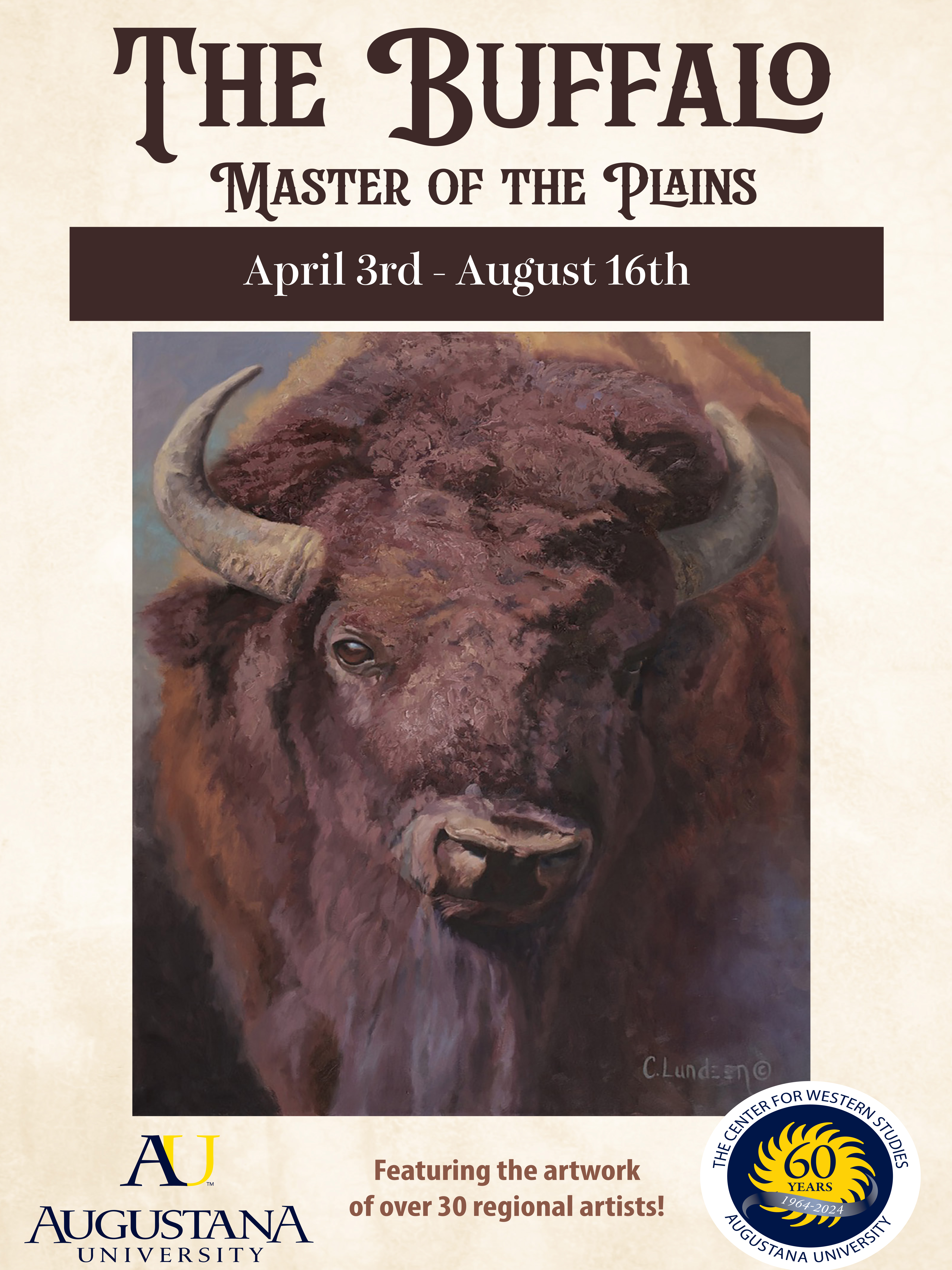The Buffalo: Master of the Plains
The Center for Western Studies is excited to present “The Buffalo: Master of the Plains,” a sequel to the acclaimed 2022 show, “Stallions and Mares: Legends of the Plains.” This latest exhibition, showcasing the work of over 35 regional artists, explores the diverse facets of the Northern Plains buffalo. Featuring more than 60 pieces in various mediums, each artwork pays homage to the buffalo’s significance.
A symbol of strength, resilience, and interconnectedness with the vast landscapes it inhabits, the buffalo holds a distinct place in the cultural heritage of the Northern Plains. Revered by Native American tribes, the buffalo embodies concepts of abundance, unity, and harmony with nature. Plains tribes hunted them as a primary food source, but conscientiously, finding uses for the meat, fat, hide, horns, and bones of the animals they killed.
As immigrants moved west in the nineteenth century, commercial hunting interests increased. Professional hunters contracted with railroad companies and the U.S. military to supply meat for their personnel at isolated posts. The fur trade drove hundreds more market hunters to the plains, and buffalo hide was used to make everything from industrial machine belts and leather military clothing to fur rugs and coats.
Intense hunting, habitat destruction, and climate changes in the nineteenth century nearly spelled doom for the buffalo. The roaming herds, estimated to have once numbered thirty million, dwindled to fewer than 1,000 by 1888. This decimation served military interests, making it easier to force Native Americans onto reservations. But South Dakota ranchers Frederick Dupree and James “Scotty” Philip saved the buffalo from extinction, and through ongoing efforts, there are approximately 450,000 buffalo in the U.S. today.
The buffalo's historical significance, both ecologically and culturally, underscores its enduring importance. As you explore the galleries and witness the diverse artistic interpretations, you'll uncover the stories that bind the buffalo to the soul of the plains. Building on the success of the horse exhibition, “The Buffalo: Master of the Plains” continues our commitment to offering an enriching and educational experience to further understanding and appreciation of the region.
“The Buffalo: Master of the Plains” opened April 3, 2024, and will run until Aug. 16, 2024. The exhibition is free and open to the public. Viewing hours are Monday - Friday, from 8 a.m. to 5 p.m. The exhibition is located in the Madsen/Nelson/Elmen Galleries of the Center's Fantle Building at 2121 S. Summit Avenue in Sioux Falls.
